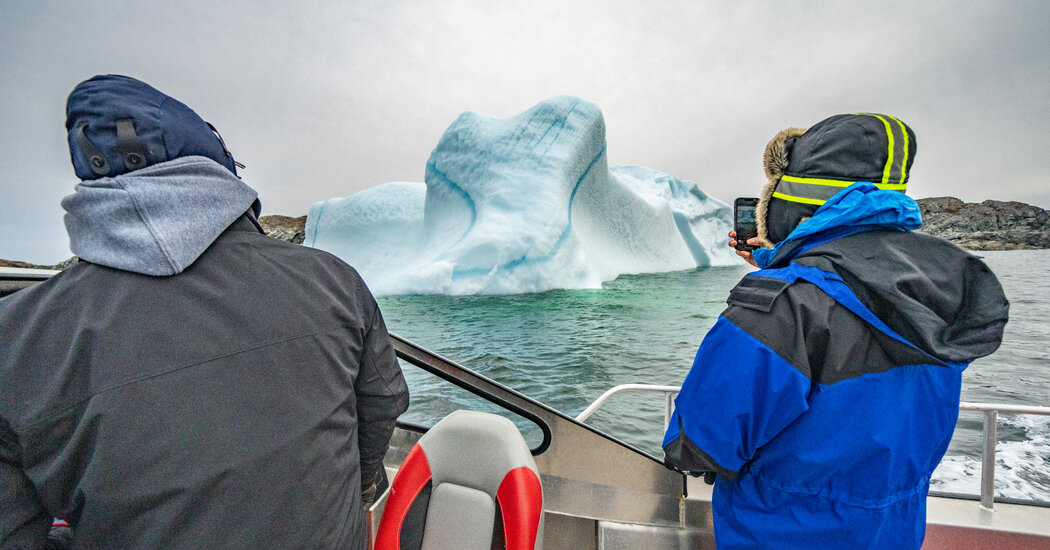“I never trust the mind of an iceberg,” Cecil Stockley told me. He estimates its length, multiplies by five and keeps his boat at least that distance away.
Dave Boyd said his safety rules depend on which type of iceberg he’s dealing with. “A tabular is generally pretty mellow,” Mr. Boyd explained as we floated off the coast of Newfoundland, referring to icebergs with steep sides and large, flat tops. “But a pinnacle” — a tall iceberg with one or more spires — “can be a real beast.”
Barry Rogers doesn’t just look at an iceberg; he listens to it, as well. When the normal Rice Krispies-like pop of escaping air bubbles gives way to a much louder frying-pan sizzle, the iceberg may be about to roll over or even split apart, he explained. Another clue, he said, is when a flock of seabirds perched atop the ice abruptly peels away en masse. They can feel the tremors that Mr. Rogers is straining to hear.
“Either way, if that’s happening — it’s time to get the hell out of Dodge,” he said.
Mr. Stockley, Mr. Boyd and Mr. Rogers are all skippers — with more than 100 years of combined experience among them — for tour boat companies who hunt for giant blocks of ice and snow in Iceberg Alley, the nickname for a stretch of water curving along the eastern coast of Newfoundland and Labrador, the easternmost province of Canada. Icebergs that have calved off the giant Greenland ice sheet pass by here each spring on a slow-motion journey southward to the open waters of the North Atlantic Ocean.
In 1912, one such iceberg struck the starboard side of the Titanic on its maiden voyage across the Atlantic. Over the years, plenty of others have done lesser damage to ships, oil rigs and even the occasional unlucky — or foolhardy — kayaker.
But the vast majority of these icebergs, melting as they move south into warmer water, don’t hit anything at all before they disappear into the sea.
As they do, it makes for a truly spectacular show: an eerily opalescent display of colossal icebergs — some looming like high mesas, others spindly and rising like the Matterhorn — destined for decay.
I saw dozens of these mesmerizing icebergs while riding on boats, standing on shore and staring out the window of a descending airplane during a meandering trip in May that took me from St. John’s, the provincial capital, to the Avalon Peninsula (the southeast section of the island of Newfoundland) and up to Twillingate, a charming coastal island in north…
Click Here to Read the Full Original Article at NYT > Travel…
